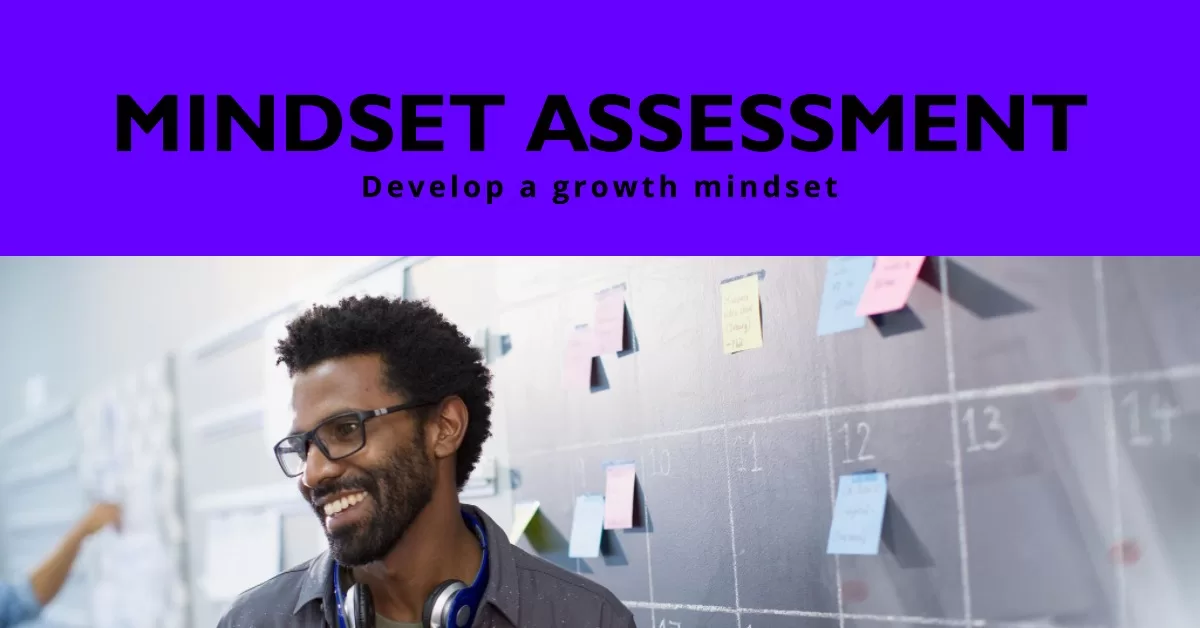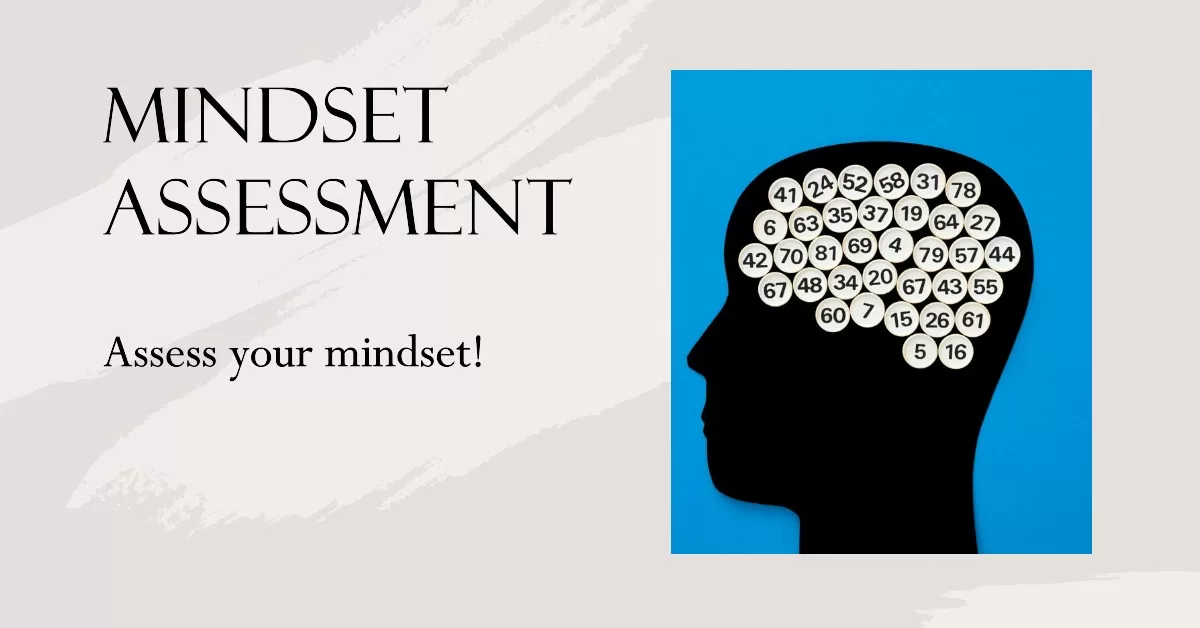In the pursuit of achieving high levels of performance, one aspect that is often overlooked is the role of mindset. While skills and knowledge are undoubtedly necessary, it is our mindset that ultimately determines our success. Research has shown that individuals with a growth mindset – those who believe their abilities can be developed through hard work and dedication – consistently outperform those with a fixed mindset – those who believe their abilities are predetermined and unchanging.
This article will provide an in-depth understanding of what constitutes a high-performance mindset, how to identify your current mindset, recognize your strengths and weaknesses, and develop a growth-oriented mentality. By assessing your current state of mind and adopting new ways of thinking, you can unlock your full potential and achieve greater success in all areas of life. Whether you’re an athlete striving for gold medals or a business leader aiming for success in the corporate world, this article will equip you with the tools needed to cultivate a high-performance mindset.
Table of Contents
- 1 Key Takeaways
- 2 Understanding the Importance of Mindset in Achieving High Performance
- 3 The Characteristics of a High-Performance Mindset
- 4 Identifying Your Current Mindset
- 5 Recognizing Your Strengths
- 6 Addressing Your Weaknesses
- 7 Changing Your Mindset
- 8 Developing a High-Performance Mindset
- 9 Applying Your High-Performance Mindset to Achieve Your Goals
- 10 Final Wrap-Up
Key Takeaways
- Having a growth mindset is crucial for achieving high levels of performance.
- Developing positive habits, such as goal-setting and resilience, is key to creating a high-performance mindset.
- Adapting to change and being self-aware are important factors in assessing one’s readiness for high-performance levels.
- Celebrating small victories and addressing weaknesses as opportunities for growth can lead to increased productivity and fulfillment in personal and professional life.
Understanding the Importance of Mindset in Achieving High Performance
The significance of mindset in achieving high performance is a crucial factor that cannot be disregarded. An individual’s mindset refers to their set of beliefs, attitudes, and values that shape their perception and behavior toward various circumstances. In other words, one’s mindset determines the way they approach challenges, opportunities, and setbacks. Achieving high performance requires an unwavering commitment to excellence, discipline, and perseverance; all qualities that stem from a positive mindset.
Research has shown that individuals with a growth-oriented mindset are more likely to achieve high levels of success compared to those with a fixed mindset. A growth-oriented mindset is characterized by the belief that abilities can be developed through dedication and hard work while a fixed mindset assumes intelligence and talent are innate traits. Individuals with a fixed mindset tend to give up easily when faced with challenges or setbacks since they believe their abilities are limited. On the contrary, individuals with a growth-oriented mindset view setbacks as an opportunity for learning and development.
Moreover, having the right mindset sets the foundation for creating habits that lead to success. High-performing individuals have specific routines that help them stay focused on their goals consistently. They practice gratitude, visualization techniques, and exercise regularly; all these habits contribute positively toward maintaining the right mental attitude required for high-performance outcomes. Therefore it is essential to develop both a positive outlook on life as well as healthy daily routines.
Understanding the importance of having the right set of mindsets in achieving high performance is critical for anyone striving for excellence across various fields of life such as sports or business alike. It not only helps in developing resilience against setbacks but also contributes significantly toward cultivating productive daily routines aimed at realizing one’s potential fully. By adopting a growth-mindset approach toward life coupled with healthy daily practices such as exercise and regular meditation sessions will undoubtedly help you achieve your desired level of peak performance in any area you choose to pursue diligently!
The Characteristics of a High-Performance Mindset

A high-performance mindset is characterized by several key attributes that enable individuals to achieve success in their personal and professional lives. These include having a positive outlook, adopting a growth mindset, being adaptable to change, setting clear goals, and taking action toward achieving them. By embracing these qualities, individuals can cultivate the mental resilience needed to overcome challenges and achieve their full potential.
Positive Outlook
Positivity in one’s outlook has been shown to be a crucial factor in achieving high levels of performance. Individuals with a positive mindset tend to approach challenges with confidence, embrace change as an opportunity for growth, and maintain a sense of optimism even in the face of adversity. This positive perspective allows individuals to focus on solutions rather than problems and view setbacks as temporary obstacles that can be overcome.
A positive outlook also helps individuals develop resilience, which is the ability to adapt and cope with stress and adversity. Research suggests that individuals who have a positive outlook are more likely to persevere through difficult times, bounce back from setbacks, and ultimately achieve their goals. A positive mindset can also lead to greater emotional intelligence, improved relationships with others, and better overall wellbeing. By cultivating a positive outlook, individuals can set themselves up for success both personally and professionally.
Growth Mindset
Developing a growth mindset involves embracing challenges as opportunities for learning and believing that intelligence and abilities can be developed through dedication and hard work. This mindset is in contrast to a fixed mindset, where individuals believe their talents and abilities are predetermined, leading to a fear of failure and a lack of motivation to improve. A growth mindset promotes resilience, perseverance, and the willingness to learn from mistakes.
Individuals with a growth mindset view setbacks as temporary obstacles that can be overcome with effort and persistence. They seek out feedback and constructive criticism as opportunities for improvement rather than viewing it as an attack on their abilities. This approach fosters lifelong learning, allowing individuals to continually develop new skills or deepen existing ones while maintaining an optimistic outlook toward future challenges. To put it simply, cultivating a growth mindset is essential for high performance by promoting flexibility, adaptability, and continuous improvement.
Adaptability to Change
Adaptability to change is crucial in today’s rapidly evolving world, as individuals and organizations must be able to adjust to new situations and challenges in order to succeed. The ability to adapt allows people to remain flexible and agile, which can be beneficial in both personal and professional settings. When faced with change, those who are adaptable are more likely to find new opportunities for growth and development. They are also better equipped to handle unexpected challenges that may arise.
Moreover, being adaptable can lead to increased resilience, allowing individuals and organizations to bounce back from setbacks quickly. This is especially important in today’s fast-paced environment where the speed of change can be overwhelming. Those who possess a high level of adaptability tend to have a positive attitude toward change, viewing it as an opportunity rather than a threat. Ultimately, cultivating an adaptive mindset can lead individuals and organizations toward success in an ever-changing world.
Goal Setting and Taking Action
Adaptability to change is a crucial mindset for high performance. It enables individuals to navigate the changing landscape of their personal and professional lives and to thrive in the face of adversity. However, adaptability alone is not enough. In order to achieve high levels of performance, individuals must also be able to set clear goals and take action toward them.
Goal setting is a process that involves identifying specific objectives and creating a plan of action to achieve them. This process helps individuals stay focused on what they want to accomplish and provides direction for their efforts. When combined with adaptability, goal setting can help individuals create a roadmap that allows them to navigate through even the most challenging circumstances. Additionally, taking action toward these goals helps build momentum and creates positive habits that support long-term success. By cultivating both adaptability and goal-setting skills, individuals can develop the mindset needed for high performance in all areas of life.
Identifying Your Current Mindset

A crucial aspect of assessing one’s mindset for high performance is to identify their current mindset. This step is essential because identifying the current mindset allows individuals to understand their strengths, weaknesses, and areas that require improvement. One effective way of identifying one’s existing mindset is through self-reflection. Self-reflection involves taking time to introspect on thoughts, actions, and behavior patterns that have been exhibited over a specific period. Through this process, individuals can gain insight into how they perceive themselves and the world around them.
Another effective method of identifying one’s current mindset is by seeking feedback from others. Feedback from colleagues, friends, or family members can provide valuable insights into an individual’s behavior patterns that they may not be aware of. It also helps individuals identify blind spots in their thinking and behaviors that could hinder their progress toward achieving high-performance levels.
Once an individual has identified their current mindset, it becomes easier to develop strategies aimed at improving performance levels. Adopting a growth mindset by embracing challenges and being open to learning new things can be instrumental in achieving high-performance levels. Individuals with a growth mindset are more likely to view setbacks as opportunities for growth rather than failures.
Identifying one’s current mindset is crucial when assessing readiness for high-performance levels. Through self-reflection and seeking feedback from others, individuals can gain insight into their behavior patterns and thought processes that influence their perceptions and actions. With this information at hand, developing strategies aimed at improving performance becomes more accessible because individuals can focus on areas requiring attention while leveraging on personal strengths already present within them.
Recognizing Your Strengths
Recognizing one’s strengths is a crucial step in achieving optimal performance, as it allows individuals to leverage their existing abilities and skills toward accomplishing their goals. Identifying your strengths can be challenging, especially if you are not used to evaluating yourself objectively. One way to recognize your strengths is by reflecting on your past successes and accomplishments. Look back at the times when you felt confident and successful in what you were doing, and try to identify the qualities or skills that helped you achieve that success. This will give you a good starting point for understanding your strengths.
Another way to recognize your strengths is by seeking feedback from others. Ask people who know you well, such as family members, friends, colleagues, or mentors, about what they think are your greatest strengths. They may have insights about you that you haven’t considered before or may validate things that you already suspected about yourself. Be open-minded when receiving feedback and take note of any recurring themes or patterns.
It’s also important to consider how your strengths can be applied in different areas of your life. For example, if one of your key strengths is creativity, think about how this could be useful in both personal and professional contexts. Perhaps there are hobbies or creative projects that you could pursue outside of work that would allow you to exercise this strength further. Or maybe there are opportunities within your job where being creative would be highly valued.
Recognizing your strengths should not just be a one-time exercise but an ongoing process throughout life. As we grow and develop new skills and qualities over time, our list of strengths will change too. Regularly revisiting our self-assessment can help us stay motivated toward our goals while also giving us a better understanding of ourselves as individuals with unique talents and abilities capable of high-performance achievement no matter the challenges ahead!
Addressing Your Weaknesses
Evaluating one’s weaknesses is a critical step toward personal and professional growth, as it allows individuals to identify areas where improvement is necessary for achieving optimal performance. Addressing your weaknesses involves acknowledging that you are not perfect and have room for improvement. It requires taking an honest look at yourself and identifying areas where you struggle or face challenges.
To begin addressing your weaknesses, it is important to assess the impact they have on your performance. For instance, if you struggle with public speaking, this may hinder your ability to present effectively in meetings or conferences. Once you have identified the weak points, create a plan of action that will help you overcome them. This may involve seeking guidance from mentors or investing time in training courses.
It is also essential to recognize that addressing weaknesses requires patience and consistency over time. Improvement does not happen overnight; it takes effort and perseverance to achieve results. To maintain momentum toward self-improvement, set achievable goals that are specific, measurable, attainable, relevant, and time-bound (SMART). Celebrate small victories along the way as they provide motivation to continue pushing forward.
Addressing weakness should be seen as an opportunity for growth rather than a liability. By assessing our weaknesses honestly and developing plans of action for improvement while maintaining consistent practice over time we can achieve optimal performance both personally and professionally. Remember that every individual has strengths and weaknesses; what sets successful people apart is their willingness to acknowledge their shortcomings and proactively work toward improving themselves continually.
Changing Your Mindset
Developing a growth mindset is essential for achieving long-term success and personal fulfillment. Changing your mindset requires a shift in thinking toward embracing challenges, persisting through obstacles, and seeing failures as opportunities for growth.
Here are three ways to change your mindset:
- Embrace Challenges: A growth mindset sees challenges as opportunities to learn rather than threats to avoid. When faced with a challenge, approach it with curiosity and a willingness to learn from the experience. By stepping out of your comfort zone and taking on new challenges, you can develop new skills and expand your capabilities.
- Persist through Obstacles: Obstacles are inevitable on the path toward success. However, those with a growth mindset view them as temporary setbacks rather than insurmountable roadblocks. Instead of giving up when faced with an obstacle, use it as an opportunity to learn and grow stronger.
- See Failures as Opportunities for Growth: Failures can be painful and discouraging, but they also provide valuable lessons that can help you improve in the future. Rather than dwelling on mistakes or beating yourself up over them, approach failure with curiosity and openness. Analyze what went wrong, identify areas for improvement, and use this knowledge to move forward.
By changing your mindset toward one of growth and resilience, you can unlock your full potential both personally and professionally. Remember that developing a growth mindset is not something that happens overnight; it takes time, effort, and commitment. But by embracing challenges, persisting through obstacles, and seeing failures as opportunities for growth, you can cultivate the kind of mindset that leads to long-term success and fulfillment in all areas of life.
Developing a High-Performance Mindset
Achieving a state of optimal mental functioning involves cultivating a set of habits and practices that enable individuals to perform at their best in various areas of life. Developing a high-performance mindset is crucial for maximizing one’s potential, as it helps individuals approach challenges with the right attitude, focus on their strengths, and persist in the face of obstacles. A high-performance mindset is characterized by several key traits, including self-awareness, goal-setting, resilience, and adaptability.
Self-awareness is the foundation of developing a high-performance mindset. It involves understanding one’s strengths and weaknesses, values and beliefs, emotions, and thoughts. By becoming more self-aware, individuals can identify their limiting beliefs or negative self-talk that may hinder their performance. They can also recognize when they are not performing at their best and take steps to correct the course.
Goal-setting is another essential habit in developing a high-performance mindset. It provides direction and purpose for one’s actions while creating motivation to achieve desired outcomes. Setting specific goals that are challenging yet achievable increases an individual’s sense of control over their performance outcome.
Resilience is also critical in developing a high-performance mindset. It enables individuals to bounce back from setbacks or failures quickly while maintaining a positive outlook toward future endeavors. Resilient individuals view challenges as opportunities for growth rather than threats to their abilities or self-worth.
Adaptability is essential for building a high-performance mindset as it allows individuals to adjust to changing circumstances effectively. Adaptable people remain focused on achieving their goals despite changing conditions such as market trends or unexpected events like pandemics.
All in all, developing a high-performance mindset requires cultivating habits such as self-awareness, goal-setting, resilience and adaptability that foster optimal mental functioning to achieve success in various areas of life. By adopting these practices consistently over time with discipline and determination will help ensure an individual’s continued growth toward achieving peak performance levels in all aspects of life they choose to pursue.
Applying Your High-Performance Mindset to Achieve Your Goals
To effectively apply the habits of self-awareness, goal-setting, resilience, and adaptability to achieve desired outcomes in various areas of life, individuals must consistently practice and integrate these behaviors into their daily routines. It is not enough to simply understand the concepts and benefits of a high-performance mindset; one must actively pursue incorporating them into their daily life. This means setting achievable goals that align with personal values and beliefs, monitoring progress regularly, adjusting strategies when necessary, and remaining adaptable in the face of obstacles or setbacks.
One key aspect of applying a high-performance mindset is developing a clear understanding of one’s personal strengths and weaknesses. By cultivating self-awareness through practices such as meditation or journaling, individuals can identify areas where they excel and those where they may need improvement. This information can then be used to set realistic goals that leverage strengths while addressing weaker areas. This process also helps individuals better understand their needs for motivation and support systems necessary to achieve success.
In addition to self-awareness, resilience is another critical component for successfully applying a high-performance mindset. Resilience refers to an individual’s ability to overcome challenges or setbacks by remaining optimistic and persistent in the pursuit of their goals. Developing resilience requires embracing failure as a natural part of growth while maintaining focus on long-term objectives rather than short-term results.
Adaptability is essential for achieving desired outcomes in today’s ever-changing environment. High-performing individuals are those who remain open-minded about new ideas or approaches while continuously seeking opportunities for learning and growth. By staying flexible in response to changing circumstances or feedback from others, individuals can maintain momentum toward achieving their goals without getting derailed by unexpected roadblocks.
Overall, applying a high-performance mindset requires consistent effort toward self-awareness, goal-setting, resilience, and adaptability over time. While it may feel challenging at first to incorporate these behaviors into daily routines consistently, the benefits are well worth it – increased productivity levels, better decision-making skills, and a more fulfilling life overall. By committing to this process of self-guided empowerment, individuals can achieve their desired outcomes in various areas of life while also fostering a sense of purpose and fulfillment.
Final Wrap-Up

It is evident that having a high-performance mindset plays a crucial role in achieving success. By understanding the importance of mindset and identifying our current strengths and weaknesses, we can take steps toward changing our mindset to become more conducive to high performance. It requires effort and dedication, but developing such a mindset is achievable through consistent practice and self-reflection.
By applying this mindset to our goals, we can unlock our potential and achieve greatness beyond what we once thought possible. It takes discipline, resilience, and a positive attitude to maintain this kind of thinking consistently. However, with determination and perseverance, the rewards are immeasurable. So let us continue to assess our mindsets regularly and work toward becoming the best version of ourselves, unlocking new levels of achievement along the way.




